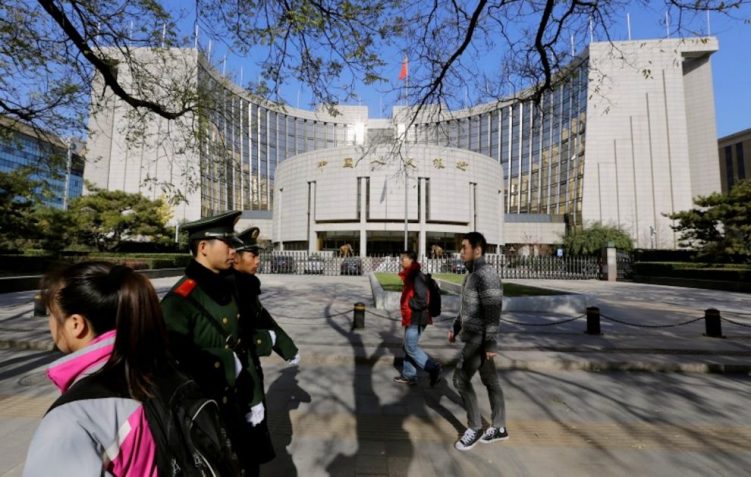China’s central bank announced moves on Monday to slow the pace of the yuan’s recent depreciation – with a plan to make it more expensive to bet against the currency.
The People’s Bank of China (PBOC) said it would raise the foreign exchange risk reserves for financial institutions when they buy forex through currency forwards to 20% from the current zero.
The move, due to start on Wednesday September 28, aims to “stabilise FX market expectations and strengthen macro prudential management.”
It is one of many measures being adopted by governments and financial officials around the world struggling to stabilize their currencies amid a strong rally by the dollar.
The move to resume FX risk reserves will effectively raise the cost of shorting the yuan at a time the local currency is facing renewed depreciation pressure, traders and analysts said. They estimate the cost of forward dollar buying could be raised by 500 to 700 pips.
“So, the effect of the policy move may be more powerful than verbal guidance and signal through midpoint fixing settings,” a trader at a foreign bank said.
The spot yuan hardly budged after the announcement, while the onshore yuan traded at 7.1662 per dollar, versus the previous late night close of 7.1298 on Friday.
Earlier on Monday, the PBOC again set firmer-than-expected official guidance for the 23rd straight trading session, at 7.0298 per dollar – the weakest level since July 7, 2020. It was 279 pips stronger than an estimate by analysts of 7.0019.
ALSO SEE: Asian Currencies Sink as Dollar Soars, More Rate Hikes Loom
On Course for Biggest Loss in 28 Years
The Chinese currency has been hit by a combination of broad dollar strength, China’s wobbly economy and an easier monetary bias adopted by authorities to prop up growth.
Over recent months, authorities have stepped up efforts to rein in yuan weakness through persistently setting firmer-than-expected midpoint fixings, verbal warnings and holding off immediate easing moves.
The yuan has slumped more than 4% to the dollar since mid-August to breach the psychologically important 7 per dollar level, and is on course for its biggest annual loss since 1994, when China unified official and market exchange rates.
Earlier this month, the PBOC moved to lower the amount of foreign exchange that financial institutions must hold as reserves.
Citi analysts said policy responses historically were largely focused on managing the pace of yuan slides.
“More (of) such responses may give opportunities to add to bearish CNH/CNY exposure,” they said in a note, cutting their yuan forecast to 7.3 per dollar from 7.2 previously.
Relentless Selling Pressure
The yuan is among a swathe of currencies facing relentless selling pressure as the dollar enjoys broad demand, underpinned by the US Federal Reserve’s rapid monetary tightening.
In Japan, where the central bank is sticking to ultra-easy policy to revive a fragile economy, authorities last week intervened in the currency market to buy yen for the first time since 1998.
China burned through $1 trillion of FX reserves supporting the yuan in the last economic downturn in 2015, when it engineered a one-off currency devaluation that roiled global markets. Ever since then, the central bank has been relying on more market-driven tools to manage the currency.
“Raising FX risk reserve showed the PBOC wants to stem the rapid yuan loss and stabilise the market,” said Ken Cheung, chief Asian FX strategist at Mizuho Bank.
“It also shows that the central bank will step in whenever it is needed,” he added, but believes the move is unlikely to reverse the yuan depreciation trend.
- Reuters with additional editing by Jim Pollard
ALSO SEE:
Japanese Yen Jumps After Rare Forex Intervention
Yen Dives to 24-Year Low as Kuroda Warns on Economic Impact
























